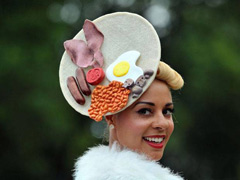


A lotta’ people wonderin’ what is the blues?
Howlin’ Wolf, 1951
“1. A state of depression or melancholy.
2. A style of music that evolved from southern African-American secular songs and is usually distinguished by a strong 4/4 rhythm, flatted thirds and sevenths, a 12-bar structure, and lyrics in a three-line stanza in which the second line repeats the first.”
The blues is Afro-American in origin, and can be traced back to the folk songs sung by slaves in the deep-south of Ameriaa, with themes revolving around work, love and the loss of, and spirituality. It took influences from country music, gospel and jazz. Once slavery was abolished many former slaves moved to big cities (like Detroit and Chicago, places where the roots of house, disco and techno can also be traced back to) and incorporated instruments like electric guitars and drum kits into their style.
But that is to oversimplify a genre that inspired countless subgenres, like bluegrass, Delta Blues, boogie-woogie, and regional derivatives like Memphis blues, Chicago blues and of course, British blues.
Trombonist Chris Barber is perhaps best known for leading the British trad jazz revival of the 1950s, however he was also an important figure for British blues (and skiffle which birthed the Quarrymen and in turn the Beatles but that’s a story for another time). The Chris Barber Jazz Band, later the Chris Barber Jazz and Blues Band, launched the careers of Ottilie Patterson, one of the first famous British blues singers, who would later become his wife. He also catapulted singer and banjo player Lonnie Donegan from the once political, folksy skiffle scene into the mainstream arena. Guitarist Alexis Korner was also part of the band, and he is widely regarded as the father of British rhythm and blues. In 1961 he formed Blues Incorporated, a band that collaborated at various times with future Rolling Stones members Mick Jagger, Keith Jones and Charlie Watts, as well as Ginger Baker, Jimmy Page and Rod Stewart. In the 60s these musicians contributed to the explosion of rock & roll creating a cultural revolution that defined popular music for the subsequent 40 years at least, and only superseded by advances in electronic music in the latter part of the 20th century.
\n\nThe Blues Is Where It’s At
Otis Spann, 1967 album title
When the Marquee Club first opened in 1958, it quickly became the go-to London venue for R&B. Established blues artists played, and in the mid-60s, the sounds naturally gravitated towards rockier, more psychedelic and progressive end of the spectrum, like Cream (psychedelic blues band with Eric Clapton, who did a lot more than Layla and I Shot The Sheriff. He was also part of John Mayall’s Bluesbreakers and the Yardbirds as well as among others) and Jimi Hendrix. The Marquee was instrumental in forging the careers of this new wave of British bands, and as is perhaps the most important venue in UK pop history. Not only were audiences treated to early shows by now-legendary artists – and the chance to watch their progress – but this was where industry showcases happened and record deals were signed. It may not have been the first, as the Flamingo and the 100 Club were already part of a thriving number of jazz and blues clubs, but it was certainly the most influential. The club closed, re-opened and changed locations several times, but never captured the spirit of the original Oxford Street venue. In 2007 it closed for good for the last time, and though rumours have abounded of yet another opening nothing has come of them yet.
The 100 Club, located at 100 Oxford Street, still operates today, and began life as a jazz venue. To be precise, it was a restaurant when it first opened in 1942, with a house jazz band playing on Sunday nights. It changed its name to the 100 Club in the 60s, when it also started hosting blues bands; American artists that Chris Barber introduced like BB King and Bo Diddly became regular performers here. Brits were represented by Rod Steward, Blues Incorporated and John Mayall.
\n\nGaz Mayall, the son of John Mayall, started Gaz’s Rockin’ Blues in 1980, and it’s currently London’s longest running club night. A lifelong avid collector of ska, reggae, funk, soul and r&b, the night is a chance for him to plunder his record collection. Nostalgia is trendy now, but Mayall has been tirelessly ploughing his trade for over 30 years, at times when it wasn’t deemed particularly cool to buy up rare records at markets and second hand shops. Held every Thursday at St. Moritz.
A mention must also go to Ronnie Scott’s, London’s premier jazz club and one of most famous venues in the world. Having opened in 1959, it’s also hosted many acclaimed blues performers over the years from both sides of the Atlantic, and indeed playing here is considered a seal of approval.
Ain’t Nothin’ But The Blues is the best blues venue in the capital today, with bands every night of the week from 5.30, and entry is always free before a certain time. Busy, sweaty and with loud music, as a blues club should be.
For further listening at home you’ve got two options: either do your own research using the internet, by listening on Spotify and downloading music, or head to a record store and flick through their vinyl, which will usually be second-hand.
Haggle Vinyl in Islington and Out On The Floor Records in Camden Town are two very good shops to start, with plenty of old, seminal records to choose from.


